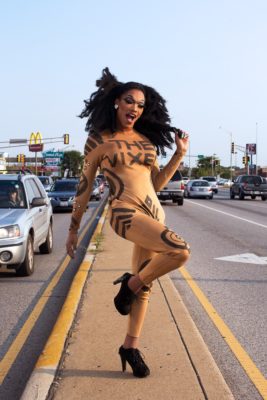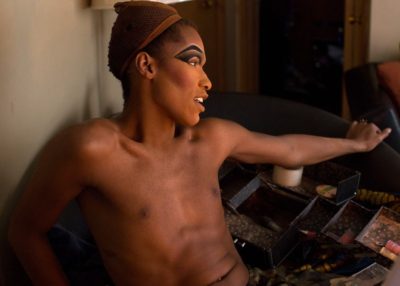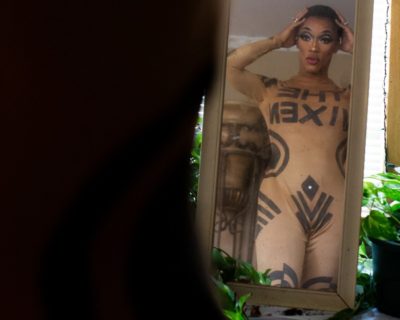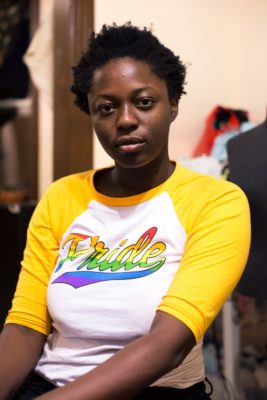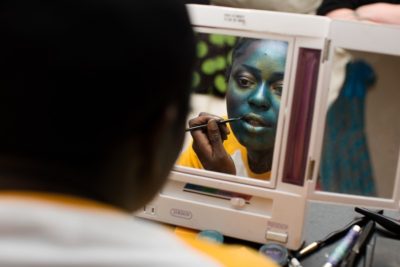
13 Sep Chicago’s black drag queens are upholding a radical gender-bending tradition
Forget RuPaul and bachelorette parties: These queens bring protest politics to the stage.
Behind the pageantry and the appletinis, drag has always been a radical act. History tends to credit white activists for the gay liberation movement, but people of color in cha-cha heels were among those who took the first stand. In the early morning of June 28, 1969, police raided Greenwich Village’s Stonewall Inn, but quickly lost the upper hand when the bar’s queer patrons began to fight back. Witnesses say that Marsha P. Johnson, a 25-year-old black trans woman and drag queen, was the first to stand up. “Marsha Johnson said, ‘I got my civil rights!’ ” Stonewall historian David Carter told the Village Voice in 2012. “Then Marsha threw a shot glass into a mirror. And that’s what started all the riots. This was later known as the ‘shot glass’ heard round the world.”
In a city more concerned with 16 shots than shot glasses, Chicago’s black queens have been passed Johnson’s torch. While the thriving ball culture of the west and south sides—explored by the Reader in a 2011 feature—is a haven for young, gay, black men “whose sexuality can make them outlaws and targets in their neighborhoods,” as the story puts it, queens who come to the glittering clubs of Boystown work within a mostly white drag culture increasingly embraced and tamed by the mainstream. According to performers, there are approximately 75 full-time working drag queens in Boystown, only five of whom are black. And in the tense aftermath of the city’s police shooting scandals, these queens continue the overtly political legacy of their art form, giving new meaning to the term “drag race.”
The Reader spoke with two of the city’s younger black drag queens about their work and their identities on and off the stage.
The Vixen
In a grainy cell-phone video, the Vixen dances beneath a purple light, thrusting her fist in the air to the beat of Michael Jackson’s “They Don’t Really Care About Us” before landing, legs akimbo, in a death drop, her back flat on the floor. It’s one of the less confrontational numbers from the 25-year-old drag queen, who once performed a song dressed as Michael Brown.
A gay man from the south side, Tony, as he’s known offstage, began performing in nearby clubs in 2012, but eventually chased paying gigs in Boystown. (Tony asked to be identified by his first name only, citing concerns for his personal safety.) “I came to the neighborhood for the same reason everybody comes to the neighborhood: to find acceptance,” he explains. But he says he quickly realized how “cutthroat” the north side was for black drag queens.
“When I started, the clubs would bring in a queen of color for each show in order to check off the diversity box,” Tony says. “So we’d all be fighting for that one spot. If I was working, then they weren’t.”
Though the neighborhood considers itself a haven for LGBT folks, Tony believes that antiblackness is still a major issue in queer circles, including the drag community. “You ultimately have to choose between calling out racism or homophobia,” he says.
This friction came to a head for him earlier in the summer when a friend made antiblack comments on Facebook about the “south side trash that ruined Pride.”
“You live in Chicago,” Tony scoffs. “We all know what you mean when you talk about people from the south side.” Tony called him out, sparking a charged discussion about the racism that he says keeps queer communities segregated.
In response to this exchange, the Vixen performed Beyonce’s “Don’t Hurt Yourself” at her next show, wearing a shirt that read south side trash. The Facebook acquaintance in question was in the audience that night.
“A lot of times you have to fight to get your face on a poster,” the Vixen says. “There’s always a risk involved when I bring up being black.”
Even so, when it comes to the politics of drag, the Vixen keeps pushing them—as Beyonce would say—“to the left, to the left.”
Petty Crocker
“I don’t think all drag is about dressing up as a woman,” says 21-year-old Itunuoluwa Ebijimi as she smears blue foundation over her face. “When a drag queen is wearing six pairs of lashes and three wigs and padding for the gods, they’re not dressing up as a woman. I’m not dressing up as a woman.”
A cisgender woman, Ebijimi, aka Petty Crocker, represents a subculture within a subculture. While the most familiar image of a drag queen is a man dressing up as an exaggerated woman, Petty practices “genderfuck” drag, caricaturing the impossible expectations of femininity and masculinity by blurring them. For queens who present in this category, it can mean pairing a poufy pink dress with a full beard, or adding synthetic sexual appendages to a delicate costume.
“I’m inspired by club kids and artists like Leigh Bowery,” Ebijimi explains, referring to the young, technicolor partygoers of 80s and 90s New York and the clown-faced performer who heavily influenced Boy George. “It’s not about classic drag but something extraterrestrial.”
Raised by her Nigerian mother in Uptown, Ebijimi began applying makeup as a teenager and staging performances in her bedroom, taking her femininity to louder volumes.
She was often the only black student in her class, and felt that her white female classmates expected a great degree of conformity from her. “I tried to live up to a white vision of what femininity was supposed to look like,” Ebijimi says.
Drag allowed her to emphasize the parts of her identity her school community tried to silence. “You can only pretend you’re not black for so long,” she says with a laugh.
Now an undergrad at the School of the Art Institute of Chicago, Ebijimi believes that drag is a high art form, one that can’t be limited by the conventional dichotomy of man vs. woman. “There’s something about creating your image,” she says. “Drag is so interdisciplinary—it’s got fashion, performance, photography, and sculpture.”
This, Ebijimi says, allows drag to be both intellectual and entertaining.
“What makes drag great is its intersectional concepts: gender, sexuality, race, class, ability.”
Donning an enormous blond afro and pants she made out of hair extensions and jeans—“a reference to cowboys, who were originally black and indigenous men”—Ebijimi checks herself in the mirror one last time before heading out. She smiles widely, eyebrows raised, embodying the club scene’s joyful mania. She tilts her face and narrows her eyes, gazing at herself with a serious look of defiance.
It’s time to perform.



